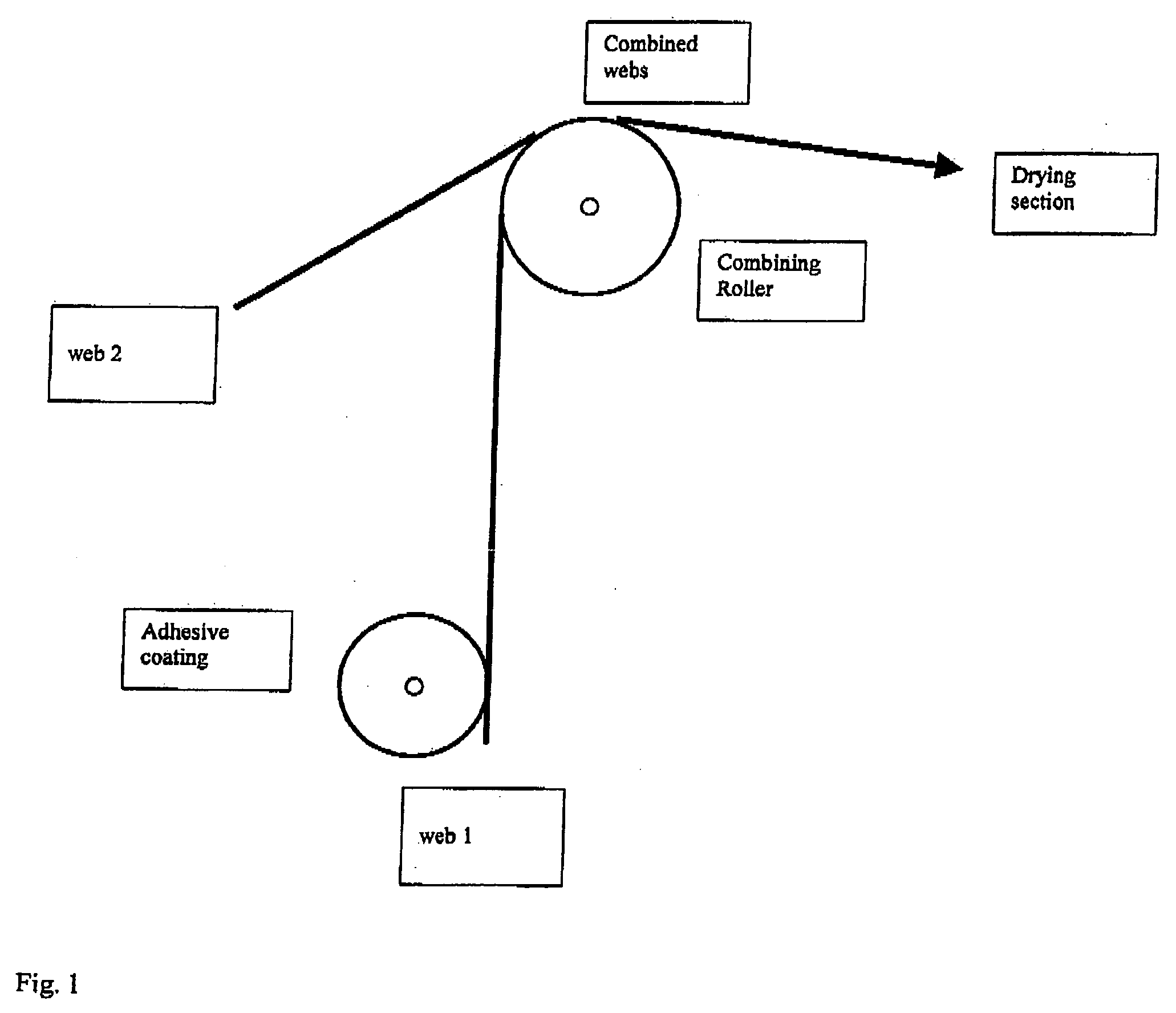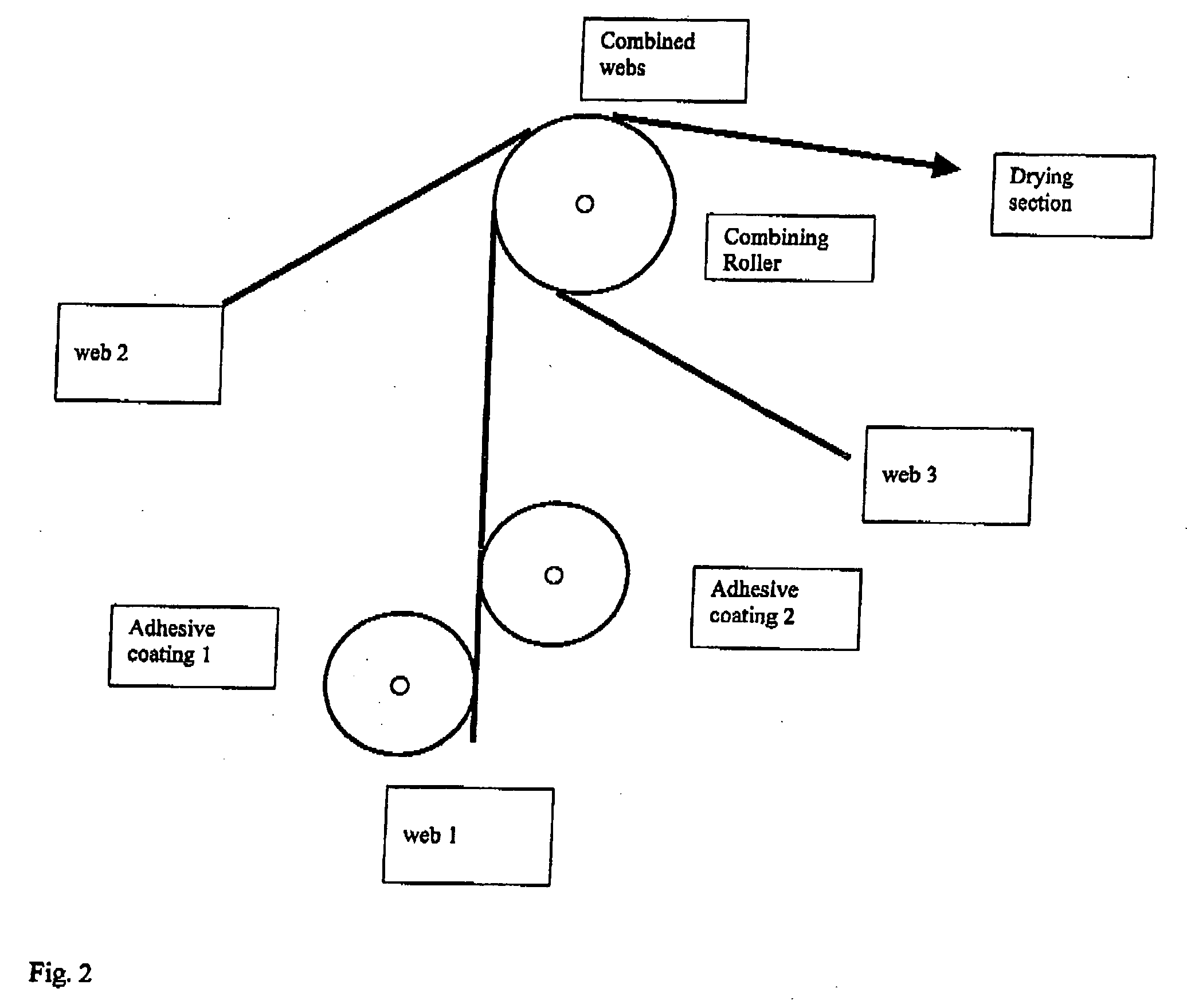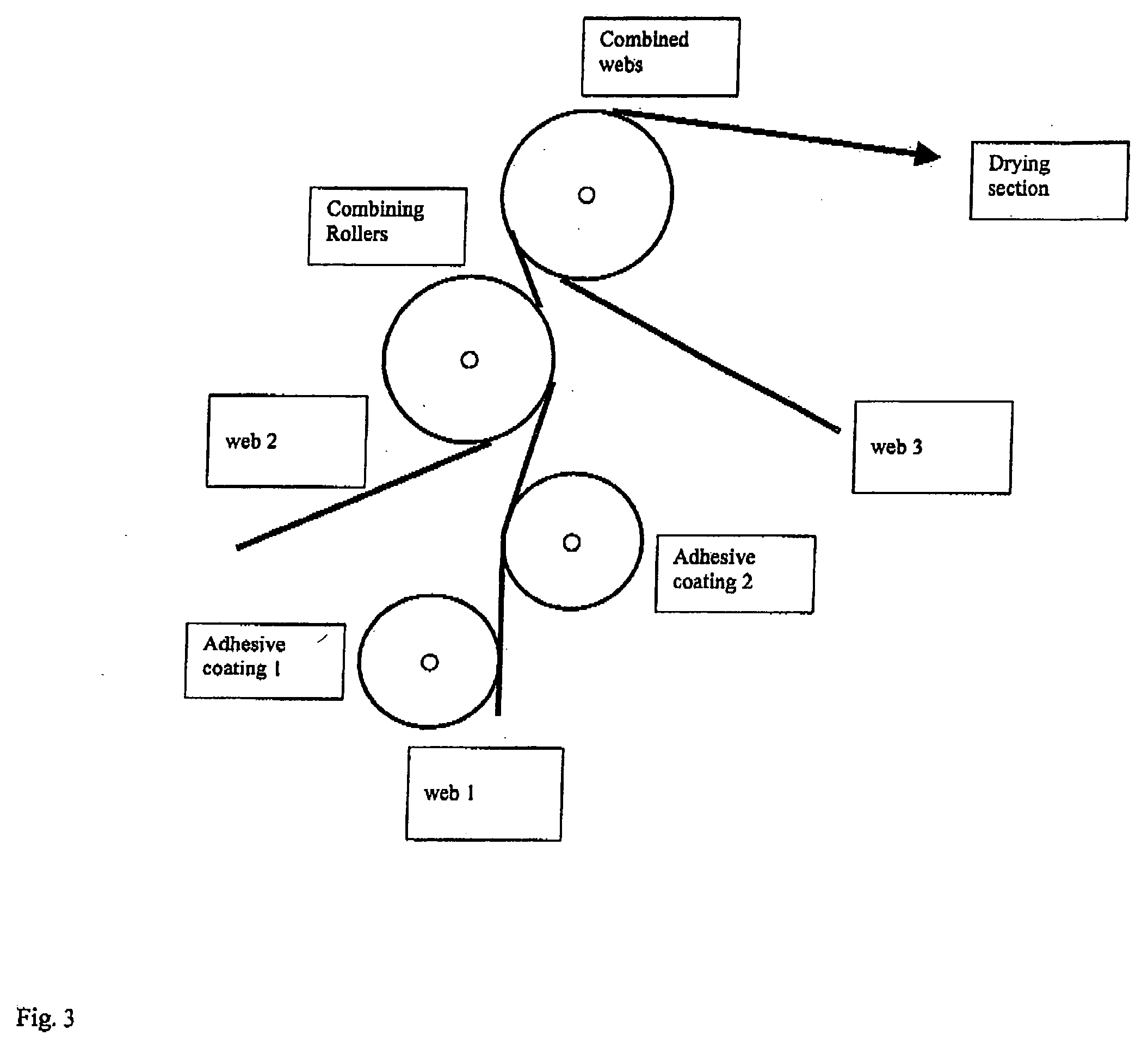Laminating process and laminates resulting therefrom
a lamination process and wet lamination technology, applied in the direction of lamination, duplicating/marking methods, labels, etc., can solve the problems of high adhesive coat weight, poor print flatness in imaged areas, and only achieve good bonding strength, so as to improve lamination quality, reduce adhesive coat weight, and increase lamination speed
- Summary
- Abstract
- Description
- Claims
- Application Information
AI Technical Summary
Benefits of technology
Problems solved by technology
Method used
Image
Examples
example 1
[0075] A 40 μm OPP film web Type Bimo Stilan TP both sides treated with corona discharge to a minimum surface tension of 40 mN / m is unwound and coated on one side by a roll application coating head with an 50% acrylic emulsion adhesive with a glass transition of 0° C. to a wet coating weight of 8 g / m2, followed by combining this film web on a combining roller of 40 cm diameter on a contact length of 250 mm with a 50 g / m2 commercial printing paper with a water vapour transmission of 2000 g / m2 / 24 h. The combined webs are heated in a drying section with contact heat on 4 drying cylinders at 60° C., 70° C., 80° C. and 80° C., respectively. The bonded product is cooled on cooling cylinders before rewinding. The line speed was 120 m / min. The product has excellent lamination adhesion, is readily printable on the paper side and has good water resistance of rating 1. It is tear resistant and has an uninitiated tear resistance of 30N according to ASTM-D-1004.
example 2
[0076] A 3-ply laminate is produced using the same raw materials as in Example 1, except that two paper webs are used for lamination of both sides of the plastic film. After unwind the film is coated on both sides with the above mentioned adhesive to yield 8 g / m2 wet adhesive coat weight on each side prior to combining all 3 webs on one roller on a length of 150 mm as shown in FIG. 2. The combined webs are dried with contact heat from each 4 drying cylinders touching the combined webs from both sides followed by the cooling and rewinding step. This symmetrical product has very good flatness under different environmental conditions, is readily printable and shows excellent water-resistance. The uninitiated tear resistance is 35N according to ASTM-D-1004, whereas tensile strength is 180N / 15 mm according to ISO1924.
example 4
[0078] The process of Example 2 is reproduced except using a 90 g / m2 one side ink jet coated matt paper from Sihl Code 3850 with a water vapour permeability of 700 g / m2 / 24 h. The non coated side of the paper is laminated to one side of the water impermeable corona treated 40 μm OPP film while the other side of the film is laminated to the above mentioned 50 g / m2 paper. The product is printed on the ink jet coated surface by a wide formate colour image with an oil based ink jet ink on a Seiko IP4500 wide format printer. The resulting print has high water resistance (rating 1), high uninitiated tear strength (37 N according to ASTM-D-1004) and can be displayed short term outdoors.
PUM
| Property | Measurement | Unit |
|---|---|---|
| length | aaaaa | aaaaa |
| thickness | aaaaa | aaaaa |
| glass transition temperature Tg | aaaaa | aaaaa |
Abstract
Description
Claims
Application Information
 Login to View More
Login to View More - R&D
- Intellectual Property
- Life Sciences
- Materials
- Tech Scout
- Unparalleled Data Quality
- Higher Quality Content
- 60% Fewer Hallucinations
Browse by: Latest US Patents, China's latest patents, Technical Efficacy Thesaurus, Application Domain, Technology Topic, Popular Technical Reports.
© 2025 PatSnap. All rights reserved.Legal|Privacy policy|Modern Slavery Act Transparency Statement|Sitemap|About US| Contact US: help@patsnap.com



